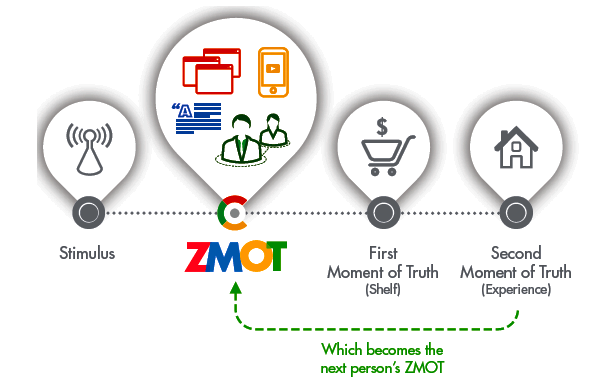One of the very important aspect of a marketer is understanding the modern sales cycle . Traditionally the sales cycle as defined by P&G way back in 1999 was of 3 steps. a) Stimulus b) First Moment of Truth c) Second moment of truth.
The Stimulus creates the product need in the mind of the customer . It drives the customer to make a buy decision. The First moment of truth is the first time the customer sees and feels the product - the a-ha moment and he buys the product , The Second moment of truth starts after the customer starts using the product and feels that the product lives up to its expectation and promise and hence feels satisfied.
However with the change in the Marketing landscape the First and second moment of truth are not the only deciding factor for marketing. Google realised this early and coined the term Zero Moment of Truth (ZMOT). The ZMOT is the defining period for a customer during which he does the product research and study across various competing products and price and understand the value of the product. The First Moment of Truth follows the ZMOT. Today ZMOT is done using various elements of social media, blogs, write-ups, various focus groups meet-ups, etc.
As a marketer, every individual needs to understand each moment of truth in order to provide useful content marketing and social media engagement that build and maintain relationships with prospects and customers.






